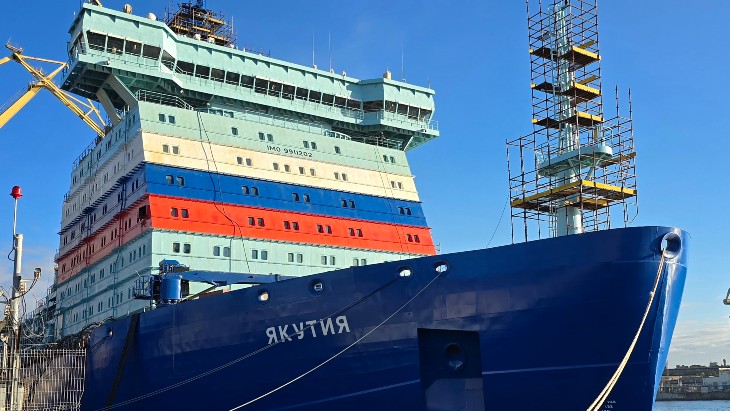The icebreaker Yakutia is the fourth nuclear-powered icebreaker from Russia's Project 22220 programme and it is nearing the end of construction at the Baltic Shipyard, which is building three more similar vessels – Chukotka, Leningrad and Stalingrad.
The RITM-200 is a pressurised water reactor with a thermal capacity of 175 MW, which converts to 30 MW at the propellers. It is 7.3 metres high with a diameter of 3.3 metres and an integral layout which its manufacturers say means it is lighter, more compact and 25 MW more powerful than previous generations used on nuclear-powered icebreakers. The service life is 40 years.
Alexander Konovalov, director general of the Baltic Shipyard, said: "The physical launch is the result of painstaking and intense work of many specialists. They have completed a huge amount of commissioning work, conducted all the necessary tests of systems and equipment. The most important stage of the icebreaker's construction has begun, during which the nuclear 'heart' of the vessel will beat at full capacity."
Before the launch of the starboard reactor, fuel assemblies were loaded and the physical launch was carried out in normal mode to a minimum controlled power level and launch equipment calibrated. Once the port reactor is ready, comprehensive testing will take place of the entire plant.
The completed vessel's speed is 22 knots, its length is 173.3 metres and it is designed to break through 3-metre-thick ice. It is 33 metres wide at the water line to clear a path for the large vessels being used on the Northern Sea Route, which represents a shorter route for freight to travel between northern Europe and east Asia.
Arktika was the first Project 22220 ship, with those following known as series vessels. The Sibir entered service in January 2022 and the Ural began its first working journey in December 2022.
Development of the Northern Sea Route is seen as a priority for Russia, with the distance from Murmansk to Japanese ports halved compared with journeys via the Suez Canal and the duration cut from 37 to 18 days. More than 35 million tonnes was transported along the Northern Sea Route in 2023.
Rosatom's proposed floating nuclear power plants, with power capacities of 100 MW and 106 MW, have been designed using reactors based on the RITM-200 ones used in the icebreaker fleet.





_47120.jpg)

_23621.jpg)






